Loss
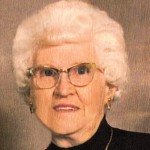
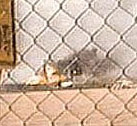 On July 19, 1989, in the skies over Alta, Iowa, United Airlines Flight 232, on which my great aunt, Gladys Cooper was a passenger, began the fateful journey to a catastrophic end. At 3:16pm, the rear engine’s fan disk broke apart due to a previously undetected metallurgical defect located in a critical area of the titanium-alloy. Basically that meant that the fan disk shattered, sending shrapnel through the hydraulic lines of all three independent hydraulic systems on board the aircraft. This horrific event caused the rapid loss of all the hydraulic fluid. The subsequent catastrophic disintegration of the disk had resulted in a spray of debris with energy levels that exceeded the level of protection provided by design features of the hydraulic systems that operate the DC-10’s flight controls. The flight crew lost its ability to operate nearly all of them. In the resulting crash landing, the right wing just tapped the runway, causing the plane to cartwheel and break apart as it went careening down the runway and into a corn field. While my Great Aunt Gladys was killed in the crash, the skill of the pilot and flight crew saved 185 lives, including their own.
On July 19, 1989, in the skies over Alta, Iowa, United Airlines Flight 232, on which my great aunt, Gladys Cooper was a passenger, began the fateful journey to a catastrophic end. At 3:16pm, the rear engine’s fan disk broke apart due to a previously undetected metallurgical defect located in a critical area of the titanium-alloy. Basically that meant that the fan disk shattered, sending shrapnel through the hydraulic lines of all three independent hydraulic systems on board the aircraft. This horrific event caused the rapid loss of all the hydraulic fluid. The subsequent catastrophic disintegration of the disk had resulted in a spray of debris with energy levels that exceeded the level of protection provided by design features of the hydraulic systems that operate the DC-10’s flight controls. The flight crew lost its ability to operate nearly all of them. In the resulting crash landing, the right wing just tapped the runway, causing the plane to cartwheel and break apart as it went careening down the runway and into a corn field. While my Great Aunt Gladys was killed in the crash, the skill of the pilot and flight crew saved 185 lives, including their own.
While listening to an audio book about World War II, and what happens when bombers flew through flak (Fl(ieger)a(bwehr)k(anone)). I knew that on at least one occasion, my dad, Allen Spencer, a Flight Engineer and Top Turret Gunner on a B-17 in World War II, was tasked with the job of cranking down the landing gear for landing. I don’t know what I had been thinking happened to the landing gear, maybe a close bit of flak the bent something in the gear perhaps, but what had not occurred to me was a catastrophic hit of that flak, causing all hydraulics to be lost. Nevertheless, quite likely that is what happened. It was one of the scenarios discussed in the book. As the hydraulics were lost, the red fluid was all over the floor of the aircraft, and the next thing that was required was to crank down the landing gear, because the gear could not be lowered without hydraulic fluid. Somehow, Dad’s precarious position of hanging out in the open bomb bay doors seemed like such a simple solution to the problem, albeit a heroic act, but the loss of hydraulics could have meant death to the crew. Getting the landing gear down was only part of the problem. What about the flaps, brakes, and such. These planes were in a really bad way.
Of course, my dad’s plane did land safely, given that he became my dad, but years later, when my mother, Collene Spencer’s Aunt Gladys was on a plane crippled by the loss of all hydraulics, I now realize…finally, that when my dad heard about what happened with Flight 232, as we all eventually did, he understood full well, 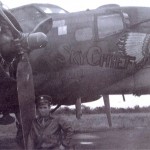
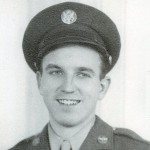 what the flight crew had been faced with. Something I only understood from the view of a spectator…for lack of a better word. He had been there. The Flight 232 situation quite likely took my dad back some 45 years to that day when he had to crank down the landing gear on a B-17 Bomber that had been damaged by flak, probably spilling hydraulic fluid all over the floor where the crew was standing. The experience must have been awful to go through, and the thought of what happened to Flight 232, almost as bad. And yet, in typical World War II veteran style, Dad said nothing, but rather set about comforting his family over the loss.
what the flight crew had been faced with. Something I only understood from the view of a spectator…for lack of a better word. He had been there. The Flight 232 situation quite likely took my dad back some 45 years to that day when he had to crank down the landing gear on a B-17 Bomber that had been damaged by flak, probably spilling hydraulic fluid all over the floor where the crew was standing. The experience must have been awful to go through, and the thought of what happened to Flight 232, almost as bad. And yet, in typical World War II veteran style, Dad said nothing, but rather set about comforting his family over the loss.

 After World War II, many of the veterans were hesitant to talk about their experiences. My dad, Allen Spencer was one of those men. We were never exactly sure why he didn’t talk about it, but thought that he didn’t want to brag. I don’t really think that was it at all.
After World War II, many of the veterans were hesitant to talk about their experiences. My dad, Allen Spencer was one of those men. We were never exactly sure why he didn’t talk about it, but thought that he didn’t want to brag. I don’t really think that was it at all.
While listening to an audiobook called Citizen Soldiers, which covers the D-Day battle and the Battle of the Bulge, it hit me…even before the author said it. The reason soldiers didn’t talk much about war was a deliberate effort to forget. Unfortunately for most of her them, forgetting was impossible. Their minds were filled with haunted memories. The book mostly covers the thoughts of the infantry, but touches on the air war too.
After listening to the author’s account of the battle, I don’t think I could ever forget either, and I wasn’t there. Memories of the 19 year old farm boy away from home for the first time, and not really trained for combat. When the shooting started, he stood up to fire. Other soldiers told him to get down, by it was too late. His first battle had become his last, as an enemy bullet pierced his forehead. The soldiers who witnessed it, felt sick to 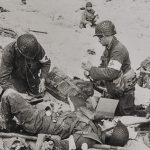
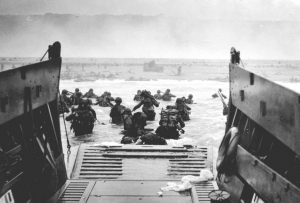 their stomachs. It was a time when a seasoned veteran was just 22 years old…and he had been made an office when his commanding officer was killed. There weren’t very many of the older men left…and by older I mean 30.
their stomachs. It was a time when a seasoned veteran was just 22 years old…and he had been made an office when his commanding officer was killed. There weren’t very many of the older men left…and by older I mean 30.
There were memories of a young prisoner of war, packed into a train to the POW camps was singing in his beautiful tenor voice, all the Christmas music he could think of to help raise moral. It was working, but suddenly the trains were under attack. The prisoners couldn’t get out, and the guards had run away. Finally a skinny boy was able to get out through a tiny window. He opened the door to his car and the men moved to free the other prisoners. There was really nowhere to go, but they escaped the attack. Then, the guards came back and loaded them back on the train. When someone asked the tenor to sing some more, they were told that he hadn’t made it back. His sweet voice was forever silenced. The men on the train were silent too…sick at heart.
The fighters in the plane’s overhead knew that it was kill or be killed, but whenever a plane went down, enemy 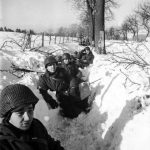
 or one of theirs, they counted the parachutes, hoping the men got out alive. For them non the planes dropping bombs, they knew that someone below went to work that day, having no idea tat they would not be returning home again. They had been simple factory workers, just doing what they were told. And what of the missed targets that landed bombs on schools and other civilian locations. The men in the planes above had to live with that. They had done their duty, but it certainly didn’t feel good.
or one of theirs, they counted the parachutes, hoping the men got out alive. For them non the planes dropping bombs, they knew that someone below went to work that day, having no idea tat they would not be returning home again. They had been simple factory workers, just doing what they were told. And what of the missed targets that landed bombs on schools and other civilian locations. The men in the planes above had to live with that. They had done their duty, but it certainly didn’t feel good.
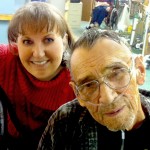
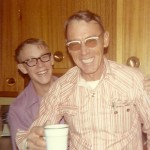 As another of my father-in-law, Walt Schulenberg’s birthday has arrived, I find myself unable to believe that he has been in Heaven for over six years now. Today, he would have been 90 years old. Somehow, I can’t imagine that he could have been that old…mostly, I suppose, because he never really acted like an old man. He always seemed young and full of life. He was busy and always working on some project. I know he slowed down some in the last year or so of his life, but it still didn’t strike me that he was growing older. Maybe because I saw him just about every day in those last few years. You somehow don’t see what is right in front of you when you are there every day. He always seemed the same vibrant workaholic that I had know all the years that he was my father-in-law.
As another of my father-in-law, Walt Schulenberg’s birthday has arrived, I find myself unable to believe that he has been in Heaven for over six years now. Today, he would have been 90 years old. Somehow, I can’t imagine that he could have been that old…mostly, I suppose, because he never really acted like an old man. He always seemed young and full of life. He was busy and always working on some project. I know he slowed down some in the last year or so of his life, but it still didn’t strike me that he was growing older. Maybe because I saw him just about every day in those last few years. You somehow don’t see what is right in front of you when you are there every day. He always seemed the same vibrant workaholic that I had know all the years that he was my father-in-law.
He was a happy man, who had a great sense of humor and loved life. He cherished every grandchild and great grandchild as they came along, and I know he would have loved his great great granddaughter too. I wish they could have met. They would have gotten along splendidly. He was always a family man, and there was nothing that was more important to him than his kids and grandkids. He loved to make things for them, and was thrilled as they played with each new toy. His craftwork was in many ways, ahead of its time. He loved to tinker in the garage, and his craft barn, where he created his unique designs, and got them read to give to someone, or to sell at one of the craft fairs.
His crafts were great, but he was a great builder too. He built the family home in the country, in the late 70s, and dressed up the house they had in town, after they moved. He refurbished lawn chairs with a fresh new classic design, that made them more a showpiece than a lawn chair. And he also built puzzles for people to try their luck at. Some of them were quite difficult to solve. I think it was all a part of the kid in him and maybe 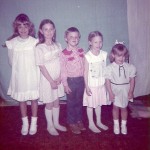
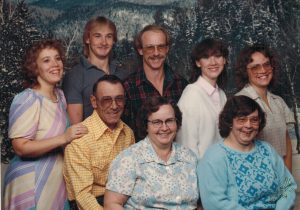 that’s why he never seemed to age. I think you have to grow up to age…don’t you? I will never forget the years that I was blessed to have Walt Schulenberg as my father-in-law. He made life fun, and he always made a person feel loved. I always knew where I stood with him…and it was a great place to be. A place of honor and respect, and yes, a place of fun and laughter too. Today would have been my father-in-law’s 90th birthday. Happy birthday in Heaven, Dad!! We love and miss you very much.
that’s why he never seemed to age. I think you have to grow up to age…don’t you? I will never forget the years that I was blessed to have Walt Schulenberg as my father-in-law. He made life fun, and he always made a person feel loved. I always knew where I stood with him…and it was a great place to be. A place of honor and respect, and yes, a place of fun and laughter too. Today would have been my father-in-law’s 90th birthday. Happy birthday in Heaven, Dad!! We love and miss you very much.
 Natural disasters happen all the time…every day for that matter. Many of these disasters cannot be predicted, or can only be predicted a few minutes to hours before the disaster arrives. That was not the case with the Limnic eruption that happened at Lake Nyos in Cameroon, on August 21, 1986…or was it. A Limnic eruption is a eruption of gas rather than lava or ash, and the gasses can be deadly.
Natural disasters happen all the time…every day for that matter. Many of these disasters cannot be predicted, or can only be predicted a few minutes to hours before the disaster arrives. That was not the case with the Limnic eruption that happened at Lake Nyos in Cameroon, on August 21, 1986…or was it. A Limnic eruption is a eruption of gas rather than lava or ash, and the gasses can be deadly.
The eruption of lethal gas came from Lake Nyos at 9:30pm on that August day in 1986, took the lives of 2,000 people in the nearby villages, including Lower Nyos. The eruption wiped out four villages too. Carbon Dioxide, while natural to the earth, and even a part of the life process, becomes deadly if there is too much of it. Because Lake Nyos and Lake Monoun are crater lakes, the possibility exists for gasses to escape from the volcanos below them. The lakes are both about a mile square, and are located in the remote mountains of northwestern Cameroon. The area is beautiful with great rock cliffs and lush green vegetation.
Prior to the eruption, there were signs of impending disaster. In August 1984, 37 people near Lake Monoun died suddenly, but the incident was largely covered up by the government. The remoteness and lack of services made the incidents easier to cover up. Since there is no electricity or telephone service in the area, it was not difficult to keep the incident under wraps, and the 5,000 people who lived in villages near Lake Nyos simply had no idea that there was a very real danger of their own lake producing the same dangerous gas. I’m not 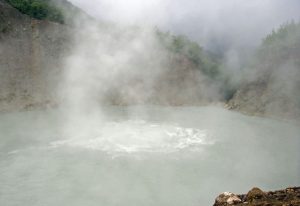 certain why they would want to keep the matter a secret, other that to avoid causing a panic, but the plan was fraught with disaster. Had the people known, maybe they could have left the area and survived.
certain why they would want to keep the matter a secret, other that to avoid causing a panic, but the plan was fraught with disaster. Had the people known, maybe they could have left the area and survived.
When scientists first began to be able to predict natural disasters, they were afraid the tell people that there was a problem. Then, after many people lost their lives from what could have been an avoidable disaster, most governments began to see the value of early warnings. The 37 people who lost their lives had no chance of a warning. There were no signs of that eruption, but if the government hadn’t hidden the facts, the 2,000 people who died when lake Nyos had its eruption, might have had a chance. At the very least, they could have made an educated decision about whether to stay or to go. Of course, with two years between the eruptions, they might have ignored the warnings too.
When the rumbling noise from the lake began at 9:30pm, and continued for 15 to 20 seconds, followed by a cloud of carbon-dioxide, and a blast of smelly air, it was too late for those people. The cloud quickly moved north toward the village of Lower Nyos. Some people tried to run away from the cloud, but they were later found dead on the paths leading away from town. The only two survivors of Lower Nyos were a woman and a child. The deadly cloud of gas continued on to Cha Subum and Fang, where another 500 people lost their lives. The carbon dioxide killed every type of animal, including small insects, in its path, but left buildings and plants unaffected, because plants use carbon dioxide as part of the growth cycle.
Reportedly, even survivors experienced coughing fits and vomited blood. Outsiders only learned of the disaster  as they approached the villages and found animal and human bodies on the ground. The best estimate is that 1,700 people and thousands of cattle died. A subsequent investigation of the lake showed the water level to be four feet lower than what it had previously been. Apparently, carbon dioxide had been accumulating from underground springs and was being held down by the water in the lake. When the billion cubic yards of gas finally burst out, it traveled low to the ground–it is heavier than air–until it dispersed. Lake Nyos must now be constantly monitored for carbon-dioxide accumulation. Hopefully that will prevent further disasters like these from happening again.
as they approached the villages and found animal and human bodies on the ground. The best estimate is that 1,700 people and thousands of cattle died. A subsequent investigation of the lake showed the water level to be four feet lower than what it had previously been. Apparently, carbon dioxide had been accumulating from underground springs and was being held down by the water in the lake. When the billion cubic yards of gas finally burst out, it traveled low to the ground–it is heavier than air–until it dispersed. Lake Nyos must now be constantly monitored for carbon-dioxide accumulation. Hopefully that will prevent further disasters like these from happening again.
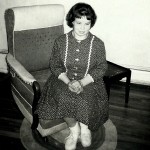
 I have four sisters, and three brothers-in-law. My husband Bob had four sisters and one brother. He still has three sisters, his brother, a sister-in-law, and two brothers-in-law. We are missing his sister, Marlyce, who died of cancer on August 13, 1989 at just 39 years old. Marlyce was the first sibling death any of us had experienced, and it left a large hole in our lives. It just seemed impossible, like a horrible nightmare. How could our sweet Marlyce be gone? I suppose that disbelief at her passing, showed the innocence we all had about life, even though we weren’t seriously young. There are just people you don’t expect to lose…at least not until much later in life, and siblings definitely fall into that category. When Marlyce passed away, she took with her a portion of the joy the family had always had. She was always so sweet, and filled with a desire to help others, and make people happy.
I have four sisters, and three brothers-in-law. My husband Bob had four sisters and one brother. He still has three sisters, his brother, a sister-in-law, and two brothers-in-law. We are missing his sister, Marlyce, who died of cancer on August 13, 1989 at just 39 years old. Marlyce was the first sibling death any of us had experienced, and it left a large hole in our lives. It just seemed impossible, like a horrible nightmare. How could our sweet Marlyce be gone? I suppose that disbelief at her passing, showed the innocence we all had about life, even though we weren’t seriously young. There are just people you don’t expect to lose…at least not until much later in life, and siblings definitely fall into that category. When Marlyce passed away, she took with her a portion of the joy the family had always had. She was always so sweet, and filled with a desire to help others, and make people happy.
One of the greatest events in Marlyce’s life was the day she became an aunt. She always loved babies, and each new niece or nephew was a treasure. Of all the nieces and nephews, there was only one she did not get to meet, Eric Parmely. And of course, she never got to meet all the grand nieces and grand nephews, or her great grand niece…sadly, because she would have loved every one of them. Marlyce’s developmental disabilities didn’t keep her from being able to hold the babies, and play with the little ones. She loved them as if they were her own babies. I suppose that if her circumstances had been different, maybe she could have been a mom, but that was not to be.
Marlyce went to Wood’s School as a child. Wood’s was a school for the developmentally disabled back then. These days the school district tries to incorporate these students into the public school system. I like that, whenever it is possible, but Marlyce had a great education anyway, and then they helped her to find a job. Marlyce worked several places, and always liked going to work. She never wanted to miss work…not for illness, 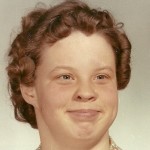
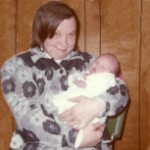 holidays, or vacations…except maybe Christmas. Marlyce loved being needed. Baking cookies, holding babies, working, and knitting were things that made her feel useful. What she never knew was that she was so much more than those things to us. We would have loved her even if she couldn’t make things, work, or even hold the babies. Marlyce holds a special place in our hearts, and she always will. Today would have been Marlyce’s 69th birthday. I can’t believe that she has been gone almost 30 years now, but I miss her like it was yesterday. Happy birthday in Heaven, Marlyce. We love and miss you.
holidays, or vacations…except maybe Christmas. Marlyce loved being needed. Baking cookies, holding babies, working, and knitting were things that made her feel useful. What she never knew was that she was so much more than those things to us. We would have loved her even if she couldn’t make things, work, or even hold the babies. Marlyce holds a special place in our hearts, and she always will. Today would have been Marlyce’s 69th birthday. I can’t believe that she has been gone almost 30 years now, but I miss her like it was yesterday. Happy birthday in Heaven, Marlyce. We love and miss you.
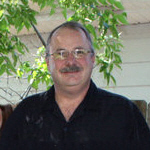 After his mother, Ramona Hadlock passed away, my brother-in-law, Chris Hadlock and my sister, Allyn Hadlock inherited his parents’ place on the North Platte River east of Casper. Chris always loved his childhood home, and he can’t wait to move back there. Chris’ parents bought their place in 1973, put a mobile home on the land, and the rest is history…family history, that is. For the most part, Chris and his younger brother, Doug were the children still at home. They loved country living. In the winter, the river and the creek on their property froze, and while they didn’t ride bicycles on the river, they did on the frozen creek. They also took turns pulling each other behind a bicycle on the frozen creek. Chris often talks about his life there and his thoughts are filled with the Christmas barbecues and summertime picnics in the back yard which sits right on the river. Those were happy days when both his parents were still alive, and the time he spent learning things from them.
After his mother, Ramona Hadlock passed away, my brother-in-law, Chris Hadlock and my sister, Allyn Hadlock inherited his parents’ place on the North Platte River east of Casper. Chris always loved his childhood home, and he can’t wait to move back there. Chris’ parents bought their place in 1973, put a mobile home on the land, and the rest is history…family history, that is. For the most part, Chris and his younger brother, Doug were the children still at home. They loved country living. In the winter, the river and the creek on their property froze, and while they didn’t ride bicycles on the river, they did on the frozen creek. They also took turns pulling each other behind a bicycle on the frozen creek. Chris often talks about his life there and his thoughts are filled with the Christmas barbecues and summertime picnics in the back yard which sits right on the river. Those were happy days when both his parents were still alive, and the time he spent learning things from them.
Chris and Allyn have been busily tearing out anything useful in the old mobile home that his parents lived  in, because they plan to sell their home in Casper to their son, Ryan and daughter-in-law, Chelsea and their family. With the proceeds of the sale, they will build their new home on the river, in the place they love to be. It was in this back yard that their rehearsal dinner was held the night before their wedding…37 years ago. And this is the land where so many other family gatherings have been held. It’s no wonder it holds such a big place in Chris’ heart. I’m sure that when he is there, he can almost visualize his parents all around him. I know that because it is the way I feel when I am in my parents home, which is now where my sister, Cheryl Masterson lives. Being able to go back to your childhood home is such a blessing, and I know that is how Chris feels too. The tearing down of the house was something they could not bear to watch in person, because it was Chris’ childhood home, and it felt so final to tear it down, but now that it is gone, they have been able to move forward with the plans for the new house, the construction of which is scheduled to begin soon.
in, because they plan to sell their home in Casper to their son, Ryan and daughter-in-law, Chelsea and their family. With the proceeds of the sale, they will build their new home on the river, in the place they love to be. It was in this back yard that their rehearsal dinner was held the night before their wedding…37 years ago. And this is the land where so many other family gatherings have been held. It’s no wonder it holds such a big place in Chris’ heart. I’m sure that when he is there, he can almost visualize his parents all around him. I know that because it is the way I feel when I am in my parents home, which is now where my sister, Cheryl Masterson lives. Being able to go back to your childhood home is such a blessing, and I know that is how Chris feels too. The tearing down of the house was something they could not bear to watch in person, because it was Chris’ childhood home, and it felt so final to tear it down, but now that it is gone, they have been able to move forward with the plans for the new house, the construction of which is scheduled to begin soon.
These days Chris talks about the new memories they will make at his childhood home, because while the 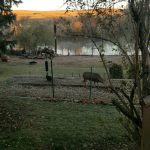 house is gone, and a new one will soon take it’s place, and his parents’ echo still remains all over the land. That will always be with him. He plans to continue many of the traditions of his parents, and of course they will start many new traditions with their own family, and with the families of their combined siblings too. The place is beautiful and quite big, so it can accommodate lots of people, and at the back fence, you can sit and view the lazy river going by. There are wild turkeys and lots of other birds, and of course, the fresh air and wide open spaces. I know that as Chris and Allyn live on the land, it will grow into a wonderful place where they will want to spend the rest of their lives…other than their place on the mountain, of course. Today is Chris’ birthday. Happy birthday Chris!! Have a great day!! We love you!!
house is gone, and a new one will soon take it’s place, and his parents’ echo still remains all over the land. That will always be with him. He plans to continue many of the traditions of his parents, and of course they will start many new traditions with their own family, and with the families of their combined siblings too. The place is beautiful and quite big, so it can accommodate lots of people, and at the back fence, you can sit and view the lazy river going by. There are wild turkeys and lots of other birds, and of course, the fresh air and wide open spaces. I know that as Chris and Allyn live on the land, it will grow into a wonderful place where they will want to spend the rest of their lives…other than their place on the mountain, of course. Today is Chris’ birthday. Happy birthday Chris!! Have a great day!! We love you!!
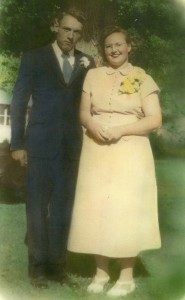 World War II had been ended four years earlier, and people were getting back to their lives. The year was 1949, and the date was June 6th. My future in-laws had other things on their minds. Today, June 6, 1949 was the day they would be married. I wonder if they were even aware of the significance of the day, but if they were, I’m sure they paused for a few moments to remember the men who that very day, just five years earlier, when one of the biggest operations in World War II was carried out. The war was over, but the aftermath was still very fresh on everyone’s minds. Still, life goes on, and while we commemorate the important days in history, we can’t usually avoid of all of them when it comes to life events that come after.
World War II had been ended four years earlier, and people were getting back to their lives. The year was 1949, and the date was June 6th. My future in-laws had other things on their minds. Today, June 6, 1949 was the day they would be married. I wonder if they were even aware of the significance of the day, but if they were, I’m sure they paused for a few moments to remember the men who that very day, just five years earlier, when one of the biggest operations in World War II was carried out. The war was over, but the aftermath was still very fresh on everyone’s minds. Still, life goes on, and while we commemorate the important days in history, we can’t usually avoid of all of them when it comes to life events that come after.
Weddings in those days were not the elaborate affairs they often are today, but rather were set to times when people might already be planning to be in town. My mother-in-law, Joanne (Knox) Schulenberg wore a simple light peach colored dress and flat shoes. For those who don’t know my mother-in-law, seeing her in a dress of any style  was amazing, because she practically lived on a horse, and dresses simply weren’t done. I never saw her in high heels, or any kind of a heel at all, so the flat white Mary Jane type of shoe was as dressy as it gets. My father-in-law, Walt Schulenberg, was equally out of character for his wardrobe style. He didn’t usually wear a suit unless he was going to a funeral. For that reason, seeing them dressed up shows just how special this day was to them. Of course, people in those days didn’t get married in some of the outlandishly casual outfits that we sometime see these days.
was amazing, because she practically lived on a horse, and dresses simply weren’t done. I never saw her in high heels, or any kind of a heel at all, so the flat white Mary Jane type of shoe was as dressy as it gets. My father-in-law, Walt Schulenberg, was equally out of character for his wardrobe style. He didn’t usually wear a suit unless he was going to a funeral. For that reason, seeing them dressed up shows just how special this day was to them. Of course, people in those days didn’t get married in some of the outlandishly casual outfits that we sometime see these days.
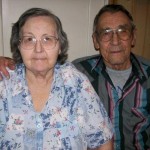
The day turned out beautifully, and while I’m not sure if theirs was an outdoor wedding or not, I rather doubt it, because in those days, you didn’t see very many of those, but I could be wrong too. Nevertheless, the day was sunny and without rain, and the wedding went off without a hitch, and their married life began. They would go on to have six children, four girls and two boys. Life would take the family from Forsyth, Montana to Casper, Wyoming in the end. While Dad left us in May of 2013, Mom was with us until January of 2018. Their love was never ending. Today would have been their 70th wedding anniversary. Happy anniversary in Heaven, Mom and Dad. We love and miss you very much.
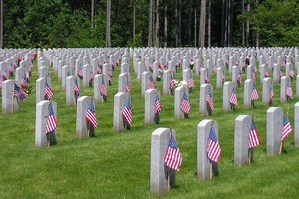
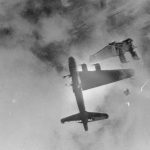 Many people think of Memorial Day as the unofficial start of summer. They plan barbecues and trips with family because they have a three day weekend. Memorial Day, however, is really a day to remember the soldiers who gave their lives fighting for our freedoms in battle. While the work of every service member, whether in battle or in peacetime, is vital, and deserves recognition, Memorial Day is not the proper day to honor every veteran…Veterans Day is the day to honor veterans who came home from war, or who served in peacetime. Many people may consider that a technicality, but when you remember that the military is an institution of protocol and discipline. Things are always done in the proper order and for the proper reasons. That is what makes the military the disciplined, capable, and highly skilled organization that it is. Of course, to those of us who have never served, there is a feeling of wanting to honor all of our service members, and we don’t see the harm in adding those who weren’t killed in action, to the same memorial as those who didn’t make it home, but we would be wrong.
Many people think of Memorial Day as the unofficial start of summer. They plan barbecues and trips with family because they have a three day weekend. Memorial Day, however, is really a day to remember the soldiers who gave their lives fighting for our freedoms in battle. While the work of every service member, whether in battle or in peacetime, is vital, and deserves recognition, Memorial Day is not the proper day to honor every veteran…Veterans Day is the day to honor veterans who came home from war, or who served in peacetime. Many people may consider that a technicality, but when you remember that the military is an institution of protocol and discipline. Things are always done in the proper order and for the proper reasons. That is what makes the military the disciplined, capable, and highly skilled organization that it is. Of course, to those of us who have never served, there is a feeling of wanting to honor all of our service members, and we don’t see the harm in adding those who weren’t killed in action, to the same memorial as those who didn’t make it home, but we would be wrong.
I have been listening to a book about the 8th Air Force in World War II. As the narrator tells the story of a bomber or fighter plane that will not be returning to base, and a crew who had a one way ticket to the war, I find myself thinking about how my dad, Allen Spencer must have felt each time the B-17 bomber, on which he was a top turret gunner, took off on another bomb run. The feeling in his gut as the plane took off, the prayers he was praying for himself and every other crew member on his and every other plane, the sickening feeling as the planes went down or exploded, and the long moments waiting and watching to see how many parachutes emerged from the stricken planes. I know that my dad and every other soldier who returned from the war, lost buddies over there. I don’t think you could ever forget those lost ones, and I don’t think you could see your way clear to honoring the living with the lost.
I know a number of soldiers, both retired and discharged, as well as some who are currently serving in the armed forces. These people know the meaning of each of the military holidays, and in fact, it was one of them 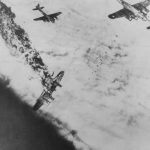
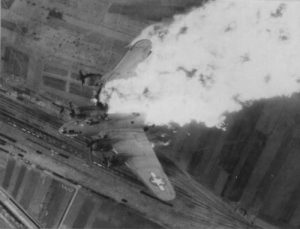 who first told me the difference between the military holidays. Once you know the difference, you really don’t feel right about celebrating the wrong way, because each holiday has its proper purpose. This memorial Day, I honor all of our fallen soldiers of any war, and I pray for the loved ones they left behind when it was known that they got just a one way ticket to war. Your loved one was a great warrior, and you have every reason to be very proud. Honoring our fallen soldiers on this Memorial Day. Rest In Peace.
who first told me the difference between the military holidays. Once you know the difference, you really don’t feel right about celebrating the wrong way, because each holiday has its proper purpose. This memorial Day, I honor all of our fallen soldiers of any war, and I pray for the loved ones they left behind when it was known that they got just a one way ticket to war. Your loved one was a great warrior, and you have every reason to be very proud. Honoring our fallen soldiers on this Memorial Day. Rest In Peace.
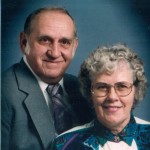 My uncle, Larry Byer was my mom, Collene Spencer’s older brother, and along with their younger brother, Wayne Byer, her best friends from her early childhood. They were the closest in age to her, and quickly became her usual playmates. Sometimes they got in trouble with their mom together, and other times her brothers were just sweet brothers who wanted to put a smile on their sister’s face. Mom always felt very blessed to be the sister in the middle of the brothers.
My uncle, Larry Byer was my mom, Collene Spencer’s older brother, and along with their younger brother, Wayne Byer, her best friends from her early childhood. They were the closest in age to her, and quickly became her usual playmates. Sometimes they got in trouble with their mom together, and other times her brothers were just sweet brothers who wanted to put a smile on their sister’s face. Mom always felt very blessed to be the sister in the middle of the brothers.
Uncle Larry was also a great blessing to his mom, Hattie Byer. When he had to move to Louisiana for work, he and Aunt Jeanette brought his mom 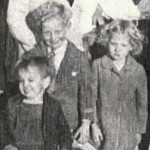 down for a visit, and showed her a wonderful time. It’s unlikely that Grandma would have traveled to Louisiana if he had not lived there, so the trip was a bit of a bonus for her. Uncle Larry was not born on Mother’s Day, but his birthday has fallen on Mother’s Day many times since then, and I’m sure that it always felt like a bit of an extra blessing for Grandma on the years that it did.
down for a visit, and showed her a wonderful time. It’s unlikely that Grandma would have traveled to Louisiana if he had not lived there, so the trip was a bit of a bonus for her. Uncle Larry was not born on Mother’s Day, but his birthday has fallen on Mother’s Day many times since then, and I’m sure that it always felt like a bit of an extra blessing for Grandma on the years that it did.
 Uncle Larry always had a great sense of humor, and a sweet nature. I always loved his laugh and he could sure tell a good joke. For as long as I can remember, Uncle Larry and Aunt Jeanette had a place out in the country. They built houses for their kids out there too, and when they moved to Louisiana, the kids stayed on the land. I always expected that they would move back on the land when he retired, but they didn’t do that. They bought a little house in Glenrock, and it was there they he lived out his days, and there that Aunt Jeanette is still living now. Uncle Larry has been in Heaven now for about seven and a half years now, and we all miss him very much. Happy birthday in Heaven Uncle Larry. We love you.
Uncle Larry always had a great sense of humor, and a sweet nature. I always loved his laugh and he could sure tell a good joke. For as long as I can remember, Uncle Larry and Aunt Jeanette had a place out in the country. They built houses for their kids out there too, and when they moved to Louisiana, the kids stayed on the land. I always expected that they would move back on the land when he retired, but they didn’t do that. They bought a little house in Glenrock, and it was there they he lived out his days, and there that Aunt Jeanette is still living now. Uncle Larry has been in Heaven now for about seven and a half years now, and we all miss him very much. Happy birthday in Heaven Uncle Larry. We love you.
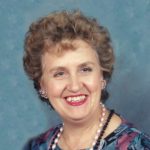 Not everyone can say that they were blessed to have two amazing women be their moms, but I can. My mom and my mother-in-law were both so instrumental in my life, and because of them, I am the woman I am today. My mother, Collene Spencer raised five daughters, Cheryl Masterson, me, Caryl Reed, Alena Stevens, and Allyn Hadlock, in that order. Sometimes I must say, I’m amazed we didn’t driver her crazy. It wasn’t fighting as much as it was the noisy laughter that went along with playing…loudly. And the little girl giggles. Many people have wished and even told their children to quiet down, because the laughter was getting too loud, and our parents did too, but as often as not, the laughter was encouraged…and even instigated by our parents. They loved having a house filled with joy and laughter, and well…ours certainly was. I recall the many forts we built, the messes we made playing house…all over the living room, the tree house in the back yard, that wasn’t as much tree house and it was just tree, but we liked to climb up there anyway. The things five girls can come up with are sometimes wild, but Mom was a patient person.
Not everyone can say that they were blessed to have two amazing women be their moms, but I can. My mom and my mother-in-law were both so instrumental in my life, and because of them, I am the woman I am today. My mother, Collene Spencer raised five daughters, Cheryl Masterson, me, Caryl Reed, Alena Stevens, and Allyn Hadlock, in that order. Sometimes I must say, I’m amazed we didn’t driver her crazy. It wasn’t fighting as much as it was the noisy laughter that went along with playing…loudly. And the little girl giggles. Many people have wished and even told their children to quiet down, because the laughter was getting too loud, and our parents did too, but as often as not, the laughter was encouraged…and even instigated by our parents. They loved having a house filled with joy and laughter, and well…ours certainly was. I recall the many forts we built, the messes we made playing house…all over the living room, the tree house in the back yard, that wasn’t as much tree house and it was just tree, but we liked to climb up there anyway. The things five girls can come up with are sometimes wild, but Mom was a patient person.
After I was married, my mother-in-law, Joann Schulenberg also became Mom. She was a different kind of person than my mom was, but her qualities were no less endearing. Living in the country, and having a garden, made canning a common project, and I had never really done any of that, although my mom knew how. I remember the big canning sessions and the in-laws’ house. We worked and talked and especially, we laughed. Everyone had a great time, and we came home with provisions for the family. My mother-in-law, try as she might, never could quite win me over to the idea of knitting, crocheting, and sewing as an everyday way of life, not to mention the marathon Wednesday grocery shopping event, and maybe that was a disappointment to her, but if it was, she never said so and never made me feel like she was disappointed in me. She always made 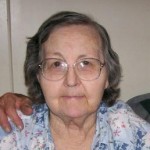 me feel like I was not just her daughter-in-law, but really her daughter. I was always amazed at the wonderful things she made, and thankful that my family always benefitted from her beautiful crafts.
me feel like I was not just her daughter-in-law, but really her daughter. I was always amazed at the wonderful things she made, and thankful that my family always benefitted from her beautiful crafts.
I have always felt blessed to have the moms I did, and now, with them both in Heaven, I find myself missing them very much. It seems impossible that they could have been gone from us for so long now, Every day I miss them and wish that I could visit Heaven for an afternoon to see them and my two dads, as well as all the other loved ones who have gone on ahead. Happy Mother’s Day in Heaven to my two moms, I love and miss you both very much. And happy Mother’s Day to all moms out there.

